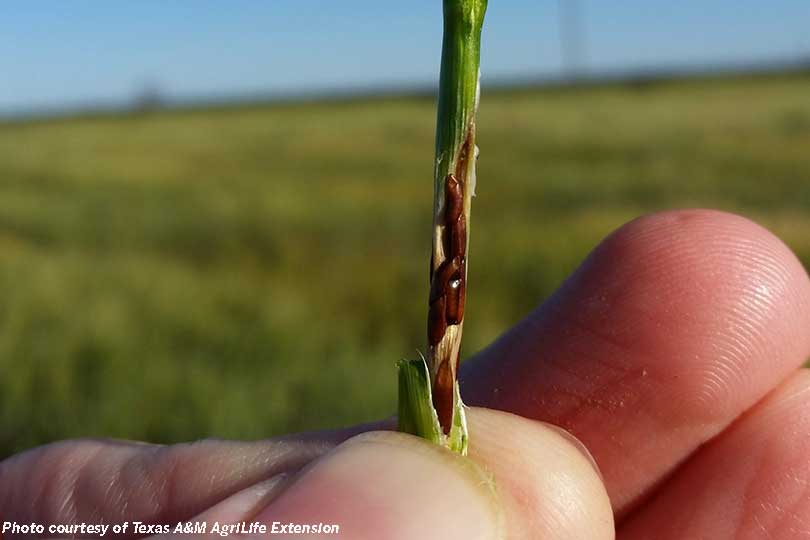Warm winters, high rainfall and increased use of minimum tillage in Texas create an environment the Hessian fly larvae thrives in, posing a threat to future wheat crops as fall planting season begins, according to Texas A&M AgriLife Extension experts.
Fall Hessian fly infestations can stunt the wheat plant’s growth, potentially limiting its forage production for livestock.
“Infestations in the spring can stunt tiller growth, reducing grain yields and cause lodging or stem breakage, making it difficult or impossible to harvest,” said Dr. David Drake, AgriLife Extension agronomist at San Angelo.
Dr. Allen Knutson, AgriLife Extension entomologist at Dallas, noted the lack of control of volunteer wheat sprouting from the previous crop has also contributed to the problem.
Preventive management and awareness is the key strategy to protect wheat crops from the looming Hessian fly threat, Knutson told AgriLife Today.
“Effective management depends on preventive measures,” Knutson said. “Eliminating volunteer wheat in the early fall is especially important, as early emerging Hessian flies can reproduce in volunteer wheat and later move to the fall- or spring-planted wheat crop once it starts to grow. Although they are weak fliers, the tiny adult flies can be carried on the wind from volunteer wheat or early planted wheat to adjacent wheat fields.”
“Simply destroying volunteer wheat two to three weeks before planting the wheat crop can save the producer much grief by reducing the instances of a number of wheat pests, not the least of which is Hessian fly,” Drake said.
Another strategy to help reduce wheat crop losses from the Hessian fly include selecting adapted wheat varieties that have resistance to the pest.
“Planting wheat varieties with genetic resistance to Hessian fly can also be effective in controlling this pest and should be the growers’ first line of defense after the destruction of volunteer wheat,” Knutson said.
Seed treatment insecticides are another line of defense for farmers against the fly.
“The insecticides Cruiser, Gaucho and Nipslt Inside are formulated to be applied to the wheat seed. As the seed sprouts, the insecticide is picked up by the roots and moved systemically within the wheat seedling,” Knutson said. “Seed treatments can reduce infestation of Hessian fly for several weeks after planting, but do not last long enough to stop infestations from later generations. Seed treatments are especially important when Hessian fly-susceptible varieties are planted and when wheat is planted early for grazing purposes.”
Farmers can also protect their wheat crops from the fly by delaying planting until the arrival of cooler fall temperatures.
Minimum tillage doesn’t help the wheat crop’s defense against the Hessian fly.
“Although minimum tillage has a number of advantages, when it comes to wheat, it probably increases Hessian fly survival as the crop residue containing over-summering Hessian fly puparia is not buried,” he said.
Crop rotation is the final step in limiting damage from the pest, according to Knutson.
“Where wheat has been planted for a number of years, crop rotation can help reduce the risk of Hessian fly outbreaks within that field,” Knutson said.
He noted current conditions indicate the fly may be a greater threat over many more acres of South and West Central Texas wheat this fall.
“Hessian fly damage has been increasing in recent years and given the high populations in some areas, preventive practices to reduce risk of crop loss will be especially important,” Knutson said. “Hessian fly is able to continue to reproduce during mild winters, resulting in higher infestations in early spring. Higher rainfall and humidity, such as we are seeing over much of the state now, ensure a high survival of the pests’ larvae into the fall and following spring.”

